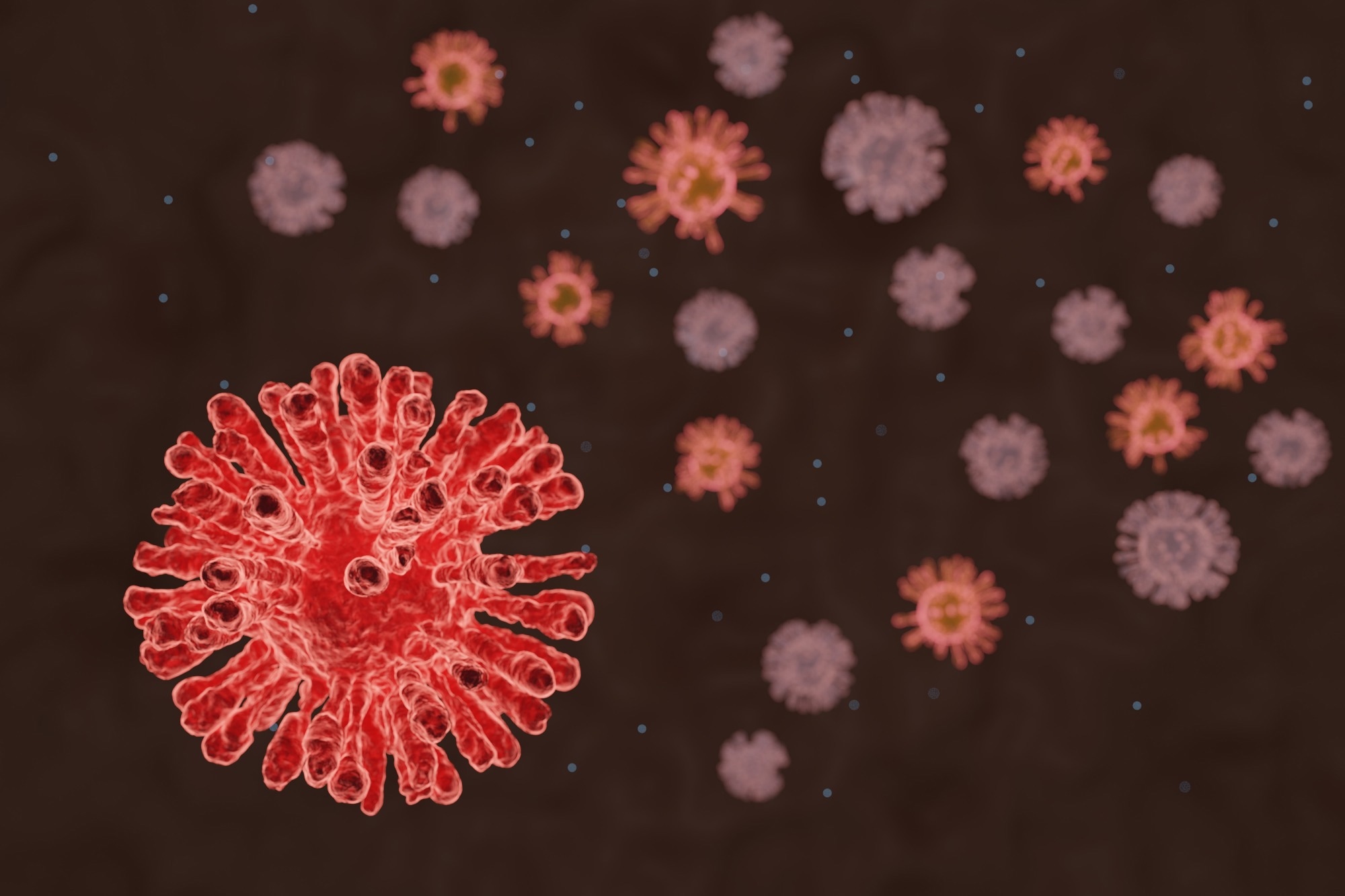In a recent study posted to the bioRxiv* pre-print server, researchers demonstrated multiple routes that severe acute respiratory syndrome coronavirus 2 (SARS-CoV-2) might take to develop high-level resistance to nirmatrelvir, an oral antiviral targeting the 3C-like protease (3CLpro) of SARS-CoV-2.

Background
Although vaccines and monoclonal antibody therapeutics have helped curtail the impact of coronavirus disease 2019 (COVID-19), SARS-CoV-2 is continuously evolving to develop resistance to antibody-mediated neutralization. There is a growing concern that SARS-CoV-2 might also develop resistance to nirmatrelvir, particularly if given as monotherapy.
Studies have reported the clinical efficacy of 89% for nirmatrelvir; moreover, nirmatrelvir helps reduce COVID-19-related hospitalization and death among high-risk and unvaccinated individuals. Studies have reported mutations associated with resistance to remdesivir, another SARS-CoV-2 antiviral with emergency use authorization (EUA) for COVID-19 treatment. Therefore, it is crucial to actively investigate how SARS-CoV-2 might develop resistance to molnupiravir and nirmatrelvir, two other EUA SARS-CoV-2 antivirals.
About the study
In the present study, researchers examined multiple routes by which SARS-CoV-2 can gain resistance to nirmatrelvir in vitro using two independent approaches. They conducted initial experiments in triplicate using Vero E6 cells to identify nirmatrelvir-resistant SARS-CoV-2 strains. Next, the researchers sequenced the 3CLpro gene from the three viral lineages collected every three passages of a total of 30 passages to investigate which mutations may confer nirmatrelvir resistance.
To better capture all the routes adopted by SARS-CoV-2 under drug pressure, the researchers utilized Huh7-angiotensin-converting enzyme 2 (ACE2) cells. They passaged SARS-CoV-2-mNeonGreen tagged strain independently in 480 wells for 16 passages, increasing the concentrations of nirmatrelvir temporally. The team subjected viruses from every fourth passage to next-generation sequencing (NGS) for 3CLpro detection.
Study findings
In Vero E6 cells, the authors noted a stepwise increase in nirmatrelvir resistance with successive passaging; however, the resistant viruses maintained their replicative fitness in vitro, with similar growth kinetics as those passaged without nirmatrelvir. After 16 passages in Huh7-ACE2 cells, the authors observed varying degrees of nirmatrelvir resistance in three viruses. NGS identified 53 mutant populations with mutations across 23 residues within 3CLpro, both proximal and distal to the nirmatrelvir-occupied catalytic pocket.
Consistent with similar small-scale studies, the authors noted that multiple SARS-CoV-2 lineages with non-overlapping mutations evolved under increasing drug pressure in both Vero E6 and Huh7-ACE2 cells. Scaling up the selection revealed that SARS-CoV-2 used multiple mutational pathways to develop nirmatrelvir resistance, but it preferred T21I, P252L, or T304I as an initial mutation. Recombinant SARS-CoV-2 with each of these mutations was moderately resistant to nirmatrelvir, indicating that while precursor mutations helped SARS-CoV-2 tolerate low concentrations of nirmatrelvir, it needed additional mutations as the drug pressure increased.
Isogenic mutant analyses revealed that the E166V mutation conferred the most resistance, close to 300-fold more than other mutations, to nirmatrelvir. This mutation also conferred cross-resistance to ensitrelvir, another clinically used 3CLpro inhibitor. At the molecular level, the valine substitution in the catalytic pocket where the E166V mutation is nested disrupts its hydrogen bonding to the lactam ring of nirmatrelvir. Several other mutations also conferred resistance to nirmatrelvir in vitro. For instance, T21I + S144A mediated substantial resistance to nirmatrelvir and cross-resistance to ensitrelvir. Similarly, L167F and F140L mutations mediated drug resistance in the C-P30 lineage in in vitro passaging experiments.
Conclusions
Future studies should extensively investigate which mutations confer resistance to nirmatrelvir and how, as well as elucidate how some of these mutations play compensatory roles (e.g., T21I or L50F compensated for the fitness loss of E166V). The current study data and further investigations could provide insights to inform the development of the next generation 3CLpro inhibiting drugs to combat COVID-19.
So far, there have been no reports of nirmatrelvir resistance among COVID-19 patients in real-world settings. Perhaps the use of high drug concentrations in the prescribed regimen makes it difficult for SARS-CoV-2 to accumulate mutations in a sequential manner. Additionally, it is prescribed while the immune system is actively combating the virus, including any resistant forms that may have emerged. Therefore, surveillance efforts to identify nirmatrelvir-resistant viruses should be focused on immunocompromised individuals, where they will most likely emerge.
*Important notice
bioRxiv publishes preliminary scientific reports that are not peer-reviewed and, therefore, should not be regarded as conclusive, guide clinical practice/health-related behavior, or treated as established information.
- Sho Iketani, Hiroshi Mohri, Bruce Culbertson, Seo Jung Hong, Yinkai Duan, Maria I. Luck, Medini K. Annavajhala, Yicheng Guo, Zizhang Sheng, Anne-Catrin Uhlemann, Stephen P. Goff, Yosef Sabo, Haitao Yang, Alejandro Chavez, David D. Ho. (2022). Multiple pathways for SARS-CoV-2 resistance to nirmatrelvir. bioRxiv. doi: https://doi.org/10.1101/2022.08.07.499047 https://www.biorxiv.org/content/10.1101/2022.08.07.499047v1
Posted in: Medical Science News | Medical Research News | Disease/Infection News
Tags: ACE2, Angiotensin, Angiotensin-Converting Enzyme 2, Antibody, Coronavirus, Coronavirus Disease COVID-19, covid-19, Drugs, Efficacy, Enzyme, Gene, Immune System, in vitro, Monoclonal Antibody, Mutation, Next Generation, Remdesivir, Respiratory, SARS, SARS-CoV-2, Severe Acute Respiratory, Severe Acute Respiratory Syndrome, Syndrome, Therapeutics, Valine, Virus

Written by
Neha Mathur
Neha is a digital marketing professional based in Gurugram, India. She has a Master’s degree from the University of Rajasthan with a specialization in Biotechnology in 2008. She has experience in pre-clinical research as part of her research project in The Department of Toxicology at the prestigious Central Drug Research Institute (CDRI), Lucknow, India. She also holds a certification in C++ programming.
Source: Read Full Article